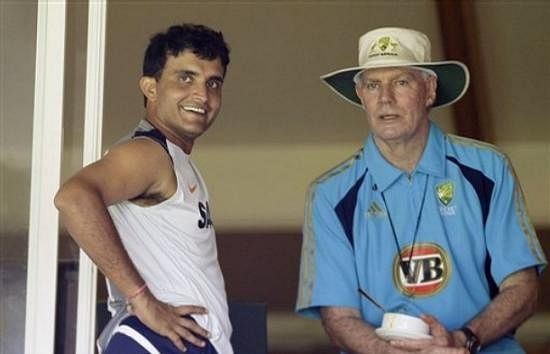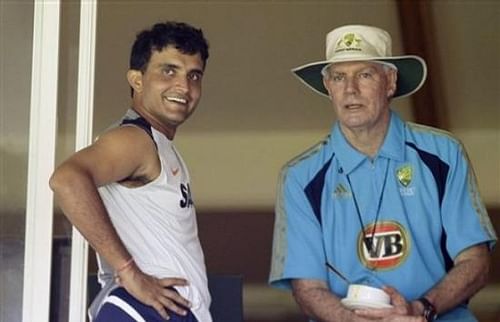
Top 5 player-coach feuds in the modern cricketing era
Grouchy coaches who bring out the best in their protégés have been part of movie folklore since time immemorial. The basic storyline is usually predictable – we have a young sportsperson who is yet to realize his or her full potential. Throw in a no-nonsense coach who chips away at the raw edges and chisels the perfect athlete, usually after tormenting them with intense training schedules and inspirational pep talks (read, verbal lashings). Everything ends well, and the moviegoer returns home happy.Al Pacino has done it, Clint Eastwood has done it, and even Shah Rukh Khan has done it. While such coach-protégé stories provide excellent material for blockbusters, real life stories – particularly within the cricketing domain – haven’t all ended happily.This article explores the top 5 coach-player feuds in modern cricketing history, a majority of which have ended badly for one or both involved.(Some of the notable omissions from the list are as follows:1. As I am only focusing on international cricket, the article does not consider the Sourav Ganguly – John Buchanan feud during IPL 2009, which deserves an entire article to itself, and redefined the concept of cricket blogging. However, both feature prominently on the list, albeit with different opponents.2. John Wright’s Sehwag-collar-grab and Mickey Arthur’s homework incidents: While both generated significant public interest at the time, none were long-lived enough to be considered feuds.3. Ross Taylor vs Mike Hesson: Definitely significant, but misses out due to the heavyweight feuds in the list.)
#1 Sourav Ganguly vs Greg Chappell

The most ironic thing about the Sourav Ganguly-Greg Chappell feud is the fact that the Australian may not have got the job as coach of the Indian national cricket team if not for the captain’s backing. A relatively inexperienced Chappell came on board in 2005, seeing off competition from Tom Moody, Mohinder Amarnath and Desmond Haynes, impressing largely through his presentation on developing a superior Indian cricketing structure.
Chappell’s first tournament, the Indian Oil Cup in Sri Lanka, coincided with Ganguly’s 4-match suspension due to India’s slow over rates against Pakistan earlier that year. This led to Rahul Dravid leading the team throughout the tournament, and Ganguly playing under him after his suspension term was reduced. Though India lost in the final, the tournament advertised Dravid’s captaincy skills, and would have sowed the first seeds of doubt in Chappells’s mind.
The tumultuous Zimbabwe tour
The next tour of Zimbabwe is possibly the most controversial in the history of Indian cricket. After rumours that Ganguly faked an injury in the first Test, where he crawled to a century against an extremely weak Zimbabwean attack, the southpaw, in a media conference, accused the team management of pressurizing him to resign. If that was not controversy enough, an email sent by Chappell to the Board of Control for Cricket in India (BCCI), where he stated that Ganguly was unfit to lead the team, was leaked in public, triggering widespread outrage. One can only imagine the repercussions in the Indian dressing room during the period.
With the situation resembling a World Wrestling Entertainment (WWE) verbal brawl more than a cricketing scenario, it seemed likely that one of the two would have to go. However, the BCCI, after a four-hour long meeting, brokered peace between the two, and issued a statement that the feuding duo would work together for the best interests of Indian cricket.
From bad to worse
Matters were to get worse; after an injury forced Ganguly out of the first four One Day Internationals (ODIs) in a total of seven against the visiting Sri Lankan side, Dravid donned the makeshift captaincy mantle again. India cantered to a 4-0 lead, on the back of superlative cricket and innovative captaincy, which included the promotion of Mahendra Singh Dhoni to number 3 in the third ODI. Dhoni announced himself to the world with an imperious 183 not out, and India eased to the nearly 300 run target with almost 4 overs to spare.
This led to the first of several snubs meted out to the Prince of Kolkata during Chappell’s reign; though he was available for the remaining three ODIs, Ganguly was overlooked, and Dravid continued to lead. The southpaw was again omitted for India’s next home series against South Africa; sentiments ran high, particularly in Ganguly’s hometown, Kolkata, and when the teams arrived in the city for the third ODI, angry mobs greeted the team, with anti-Chappell protests in full swing. The coach did his cause no good by allegedly showing the middle finger to the crowd.
Indian cricket hit a particularly low point during that match, with crowds booing Indian players, and cheering South Africa on to a 10-wicket win.
A cat and mouse game ensued, with Ganguly being ignored on several occasions over the next year. What began as a clash of egos between two aggressive personalities had now become a national spectacle, even triggering debates in the Indian Parliament.
The last laugh
Ganguly forced his way back into the team after a disastrous batting performance by the Indians in the 2006 ICC Champions Trophy and the South Africa ODI series. His modified batting style saw him accumulating several significant scores, and helped cement his place in the side, albeit for the time being, across both formats. India’s stunning ouster in the first round of the 2007 World Cup, one in which they were considered among the favourites, resulted in Chappell’s resignation, bringing to an end one of the most tumultuous coach-captain relationships in cricketing history.
To rub salt into the wound, Ganguly emerged as the second highest run-scorer in Tests during the year, behind Jacques Kallis, and the fifth highest in ODIs.
The uneasy relationship did not end there, with Chappell ranting about the southpaw’s inadequacies and insecurities in his 2011 released autobiography, Fierce Focus. Ganguly paid back the compliment by highlighting Chappell’s inability to help Australia when he was invited to speak to the Australian team ahead of India’s tour.
One can safely conclude that this is one relationship which has withstood the trials of time!